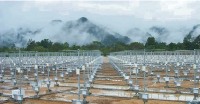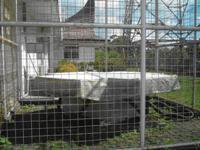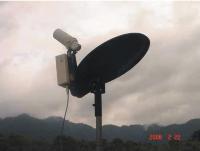Special Program for International Students
GRADUATE COURSE IN EARTH SCIENCE
& GEOENVIRONMENTAL SCIENCE
Current MEXT students




Mutya Vonnisa (Indonesia)
Email: mutya_vonnisa14 @yahoo.com
Thesis title: Estimation of Raindrop Size Distributions (DSDs) using dual frequency atmospheric radar in Koto Tabang, West Sumatra, Indonesia.
Supervisor: Prof. Toshiaki Kozu (2008-2010).
The Indonesian Archipelago is the center of intense atmospheric motions and global atmospheric changes. The mechanisms of these atmospheric changes and fluctuations, however, are not yet clear, due to the sparseness of observational data and lack of atmospheric study in the region. Research activity is centered on the Equatorial Atmosphere Radar (EAR) located at the equator in Koto Tabang, West Sumatra, Indonesia. Observations began in June 2001, with collaboration between several Japanese institutions (e.g. Kyoto University and Shimane University) and the National Institute of Aeronautics and Space (LAPAN) of Indonesia.
Raindrop size distributions (DSDs) define most of the parameters intervening in a broad list of applications such as understanding of the microphysical mechanisms responsible for precipitation formation, microwave attenuation by rain, soil erosivity due to rainfall, and retrieval of rainfall properties using radar and other remote sensing techniques.
In general, my M.Sc research will focus on atmospheric remote sensing from a scientific point of view. Atmospheric remote sensing will be studied as a key tool for observing atmospheric activities. I will study the principles of radar techniques such as EAR, Boundary Layer Radar (BLR) and Micro Rain Radar (MRR), which are all used in this program. New techniques to retrieve precipitation parameters from radar will be also focused on, especially the method to measure the raindrop size distribution from these radars. The three radars will provide information on the vertical structure of precipitation over Sumatra. This study will improve our understanding of convective activity over Sumatra and its relationship to larger-scale atmospheric phenomena. This is crucial for the elucidation of regional to global atmosphere.
